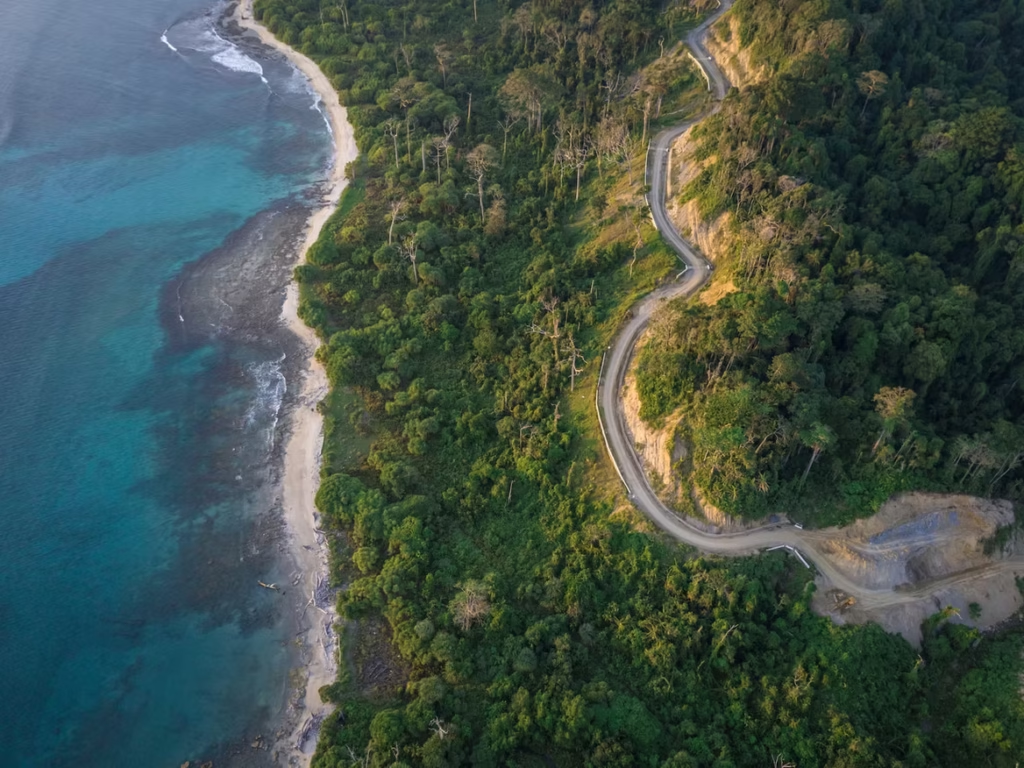How were Andaman and Nicobar Islands Formed?

Today, when we think of the Andaman and Nicobar Islands, we think of turquoise waters, green forests, and all kinds of marine life. But the tropical paradise that exists today has a fascinating geological history that goes back millions of years. The Andaman Islands formation is a tectonic, volcanic, and landscape changing story, that is still happening today. In this article, we will explore the geological history of Andaman, the geological processes of tectonics and volcanism, and how they formed the exceptionally beautiful archipelago of islands that we know today. Are you looking to explore the Andaman and Nicobar Islands and create your own unique experience? Try The Tarzan Way, a unique AI-generated personalized trip planner generating unique Andaman travel experiences just for you. What’s in this Blog Geological History of Andaman Islands Plate Tectonics and the Subduction Zone Volcanic Activity in the Andaman Islands Separation from Indonesian Landmasses & Age of the Islands Erosion, Sea Level Changes & Coral Growth Impact on Biodiversity and Human Presence FAQs Final Thoughts Geological History of Andaman Islands The geological history of Andaman stretches over 88 million years ago, back when Earth’s continents came together and drifted apart in various configurations. The Andaman Nicobar geology shows that the islands were slowly exposed above sea level as a result of massive tectonic forces. Erosion, volcanism, and changing sea levels shaped the original landscape of the Andaman Nicobar area and created all that we see today as part of the Andaman Nicobar archipelago history. Check out our blog on Andaman and Nicobar Islands: Tropical Paradise Reimagined to see how these geological formations meet modern attractions. Plate Tectonics and the Subduction Zone It is impossible to fully explain how the Andaman Islands were formed without plate tectonics. The islands sit on a plate boundary where the Indian Plate is subducting beneath the Burmese Plate. This Andaman Nicobar subduction zone is very active and generates earthquakes and complex seafloor features. This immense pressure folded and lifted portions of the ocean crust, resulting in the chain of islands. The continuing plate tectonics in Andaman indicates the region is still geologically active. Volcanic Activity in the Andaman Islands Another important piece of the puzzle is volcanic activity in Andaman Islands. Barren Island, the only active volcano in India, is located here, and past eruptions have added new layers of rock and altered portions of the island group. Volcanic evidence has not only contributed to the Andaman Islands origin theory but continues to demonstrate the raw, creative power of geology. Adventure seekers can explore these landscapes alongside coral reefs — read more in our blog Andaman and Nicobar Islands: Diving into Underwater Wonders. Separation from Indonesian Landmasses & Age of the Islands Around 26 million years ago, fractures in the Earth’s crust first distinguished the Andaman Islands by breaking off from the Indonesian archipelago. This physical break allowed them room for unique ecological and cultural evolution. Thus, the Andaman Nicobar archipelago history represents millions of years of independent existence — a living museum of natural history. Erosion, Sea Level Changes & Coral Growth In addition to tectonics and volcanism, natural sculpting forces contributed. Erosion carved valleys, shifting seas submerged and revealed land, and corals colonized the coasts. Together, these forces have finely tuned the Andaman Islands formation, creating a nuanced interplay of steep cliffs, sandy beaches, and rich underwater habitats. Want to know if they are coral islands? Read our detailed blog: Are Andaman and Nicobar Coral Islands? Impact on Biodiversity and Human Presence The geological history of Andaman produced not only land but also biodiversity — from dense tropical forests to colorful reefs. Geological processes made the archipelago a rare hotspot of biodiversity. People arrived much later, bringing diverse cultures that added new chapters to the Andaman Nicobar archipelago history. Colonial exploration and waves of migration further shaped the human story here. If you’re planning to explore this mix of nature and heritage, don’t miss our Ultimate Travel Guide to Andaman. FAQs Q. How old are the Andaman Islands? The Andaman Islands’ age is estimated at around 88 million years, shaped by tectonic activity and volcanic forces. Q. What geological processes led to their formation? The Andaman Islands formation is the result of plate tectonics, volcanic activity, and erosion over millions of years. Q. Are the Andaman & Nicobar Islands volcanic? Yes – Barren Island shows active volcanic activity in the Andaman Islands, while many other islands have dormant or tectonic origins. Q. What plates are involved in Andaman tectonics? The Indian Plate and Burmese Plate interact at the Andaman Nicobar subduction zone, driving earthquakes and uplift. Q. When did the islands separate from Indonesia? About 26 million years ago, fractures split them from the Indonesian archipelago, shaping the unique Andaman Nicobar geology. Q. What role does the subduction zone play? The Andaman Nicobar subduction zone causes seismic activity and continues to shape the region’s geology through uplift and deformation. Q. Do volcanic activities still occur? Yes – Barren Island remains active, showing ongoing volcanic activity in Andaman Islands. Q. Are there different origin theories? The main Andaman Islands origin theory is tectonic uplift, but coral growth and erosion also played significant roles. Q. How do erosion and coral reefs affect the islands? Erosion and coral reefs refined coastlines, enriched marine biodiversity, and contributed to the long-term Andaman Nicobar archipelago history. Final Thoughts The Andaman’s geological history tells the grand story of Earth — continents moving, volcanoes erupting, oceans rising and falling, creating the beauty we see today. From plate tectonics and the Andaman Nicobar subduction zone to the living evidence of volcanic activity in the Andaman Islands, the archipelago embodies nature’s enduring creativity. Want to go further than science? Let The Tarzan Way, our AI-managed adventure generator, plot your Andaman experience including history, culture and natural beauty.
Andaman and Nicobar Islands – Do you need a passport?

Navigating the Andaman and Nicobar Islands’ shores invites visitors to explore a region of stunning beauty and distinct charm. However, the topic of whether a passport is required to set foot on these heavenly shores frequently arises in the minds of travellers. For visitors from within India, the Andaman and Nicobar Islands give a cordial welcome that does not require a passport. As Indian union territories, these islands welcome Indian people with open arms, allowing them to enjoy their pristine beaches, lush landscapes, and teeming marine life without the requirement for an international travel document. Photo by Blake Guidry on Unsplash If one’s journey to these islands begins on foreign soil, the story takes a different path. For overseas travellers, the familiar companionship of a passport, coupled by the necessary visa arrangements, becomes a requirement. The Andaman and Nicobar Islands have their own distinct charm, but they also follow worldwide travel paperwork standards. Because the islands are an important part of India, domestic travellers can visit this haven without being hindered by passport requirements. Those embarking on a global voyage to these tropical havens, on the other hand, see the passport as the key to unlocking the treasure trove of their beauty. The Andaman and Nicobar Islands stand as a tribute to the range of human experiences in the delicate dance between travel prohibitions and the appeal of exploration. They welcome Indians with open arms and extend an invitation to international travellers armed with passports to learn their enthralling mysteries.



